Best Practice Below Ground Waterproofing
Safeguard your structure from the ground up with proven tanking systems that protect basements and below-ground spaces in all NZ conditions.
1
Water Protection – Prevent basement and foundation water damage.
2
Reliable in All Conditions – Perform well in high water table or poor drainage areas.
3
Integrated Solution – Combine tanking, drainage, and insulation for total defence.


Waterproofing Below Ground:
What Every Designer Should Know
Below-ground spaces like basements, lift pits and retaining walls face constant moisture pressure from surrounding soil. Effective waterproofing, or tanking, must form a continuous barrier that prevents water ingress through floors and walls.
In New Zealand, designers can choose from sheet membranes, bentonite clay systems, liquid-applied coatings, or integral crystalline admixtures.
Each system has its strengths – sheet membranes offer uniform thickness and high puncture resistance, bentonite systems self-seal, liquid membranes provide seamless coverage around penetrations, and integral crystalline admixtures offer self-sealing properties and long-term protection by forming crystals that block water pathways within the concrete itself.
The right choice depends on access, substrate type, and expected water pressure.
Comparing Tanking Systems - Positive Sheet, Bentonite and Negative-Side Solutions
Positive-side tanking (externally applied) is considered the most effective as it blocks water before it reaches the structure.
Sheet membranes offer uniform thickness and high puncture resistance - and are watertight from the day they are installed.
Bentonite systems offer self-sealing properties and work well in blindside applications but require full confinement for the life of the building (ie no chance of settlement, liquifaction or subsidence).
Liquid-applied membranes suit complex shapes but need careful curing and protection.
Negative-side waterproofing, applied to interior walls, is often used in retrofits but does not prevent water entry - only redirects it.
Understanding the site and structural context is key to choosing the right method.
Related Nuralite Products
.png)
Integrating Drainage, Insulation and Protection for Total Below-Ground Performance
Membranes alone cannot ensure long-term dryness below ground.
A holistic system is needed - beginning with perimeter drains, geotextile filters, and vertical drainage boards. These reduce hydrostatic pressure on the membrane.
External insulation is recognised as the better option over internal strap and lined methods. XPS boards add thermal performance while also protecting the membrane from backfill damage.
All layers must be properly detailed, sealed, and protected during construction. For the most robust outcomes, especially on commercial or deep basement projects, integrated drainage and waterproofing systems are essential.
FAQs
What is the best waterproofing method for basements in NZ?
How does a tanking membrane protect against water ingress?
What's the difference between positive and negative-side waterproofing?
Can I waterproof a below-ground wall after construction?
What are the signs of water ingress in below-ground areas?
Related Webinars










